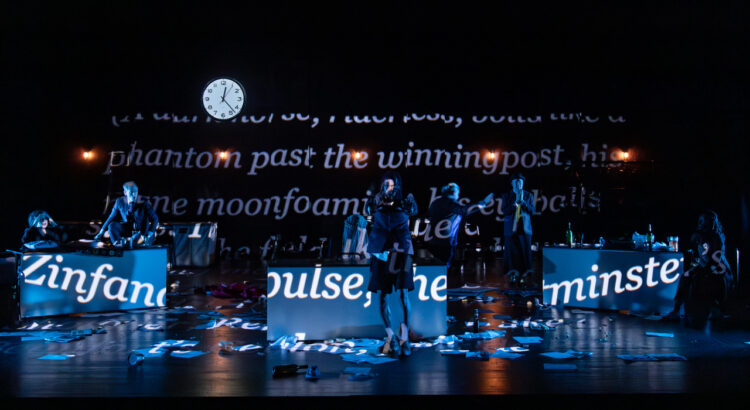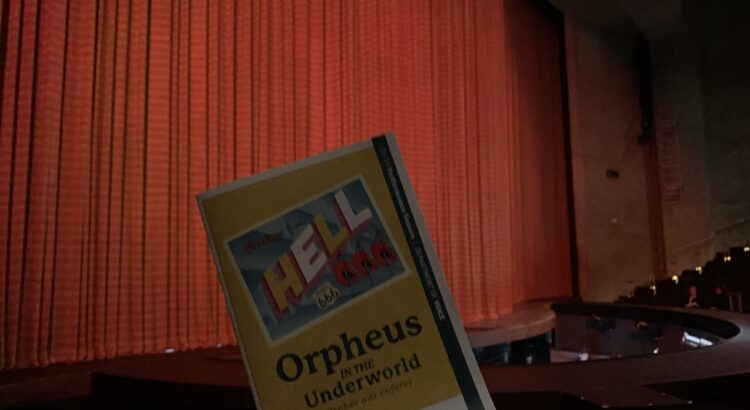The Elevator Repair Service’s production of Ulysses feels more like a work of art than a play, passing almost like a blurred fever dream of text and desks and baby dolls. The company is known for Gatz, an eight-hour production during which the entirety of F. Scott Fitzgerald’s The Great Gatsby is read and performed. Ulysses, based around James Joyce’s notably lengthier novel of the same name, does something similar, though at a more moderate runtime (under three hours, including an intermission). In one of the few moments not pulled directly from the text, the audience is told in an opening explanation given by actor Scott Shepherd that all of the text will play on a teleprompter on the back of the auditorium. As far as I could tell from when I looked back during the performance, this is true, though it is impossible to see both the screen and the action on stage at the same time. However, not all of the text is spoken – various chunks are fast-forwarded through, a whiz playing over the speakers as the teleprompter speeds up and a digital clock in the background which tracks the time in the play spins on to the next moment. Sometimes, the text scrolls along the front of the desks the characters spend much of the play sitting behind; sometimes, the entirety of the stage, including the actors on it, are covered with the text, which occasionally overlaps itself like pages laid on top of one another. The latter is an especially visually striking effect, as the text layers over itself and subtly three-dimensional elements at the back of the stage.
Ulysses carries with it a peculiar sort of minimalism. There are only seven actors, but a great many more characters, so everybody ends up playing multiple roles. Vin Knight, playing Mr Deasy and Leopold Bloom (the latter being the main character of the novel), plays the fewest number of roles, with other actors playing between four and nine. Character shifts are indicated by small costuming shifts, particularly hats; Lenehan, for instance, played by both Maggie Hoffman and Christopher-Rashee Stevenson, is indicated by a blue cap. The play starts out in an office, and so the blazers reasonably worn by characters in such a setting provide one more element to remove or add to indicate character shifts. There’s a lack of extravagance to the changes, though – though the actors act in different ways, the fact that there has been intentionally little effort made to distinguish their characters from one another makes it impossible to forget that this is a work being put on by seven people, playing different characters. The whole thing feels self-aware of its status as a play, and of its status as a sort of staged reading of a novel. There are stage lights upstage, above-stage, and peeking out of the wings, and they’re always visible. At one point, Shepherd breaks out of the text to warn the audience in an aside that things are going to become somewhat more confusing (there was laughter in the audience at this). Remnants of earlier scenes – bits of paper, crumbs, office supplies – linger behind after they’re gone. Somehow, this all adds to the sense of surrealism which surrounds the piece until it comes to a head around the middle of the second act. During this portion, among other things, Bloom is seen giving birth (most of the babies are successfully caught; they are all summarily placed in a bucket; one is wearing a Michigan shirt), and a character sees the ghost of their mother. The play grows more and more manic, before beginning a decrescendo into more calm realism. It ends with an extended soliloquy by Bloom’s wife, Molly (Maggie Hoffman, delivering said monologue with aplomb). As with the rest of the play, it is taken directly from the original novel.







